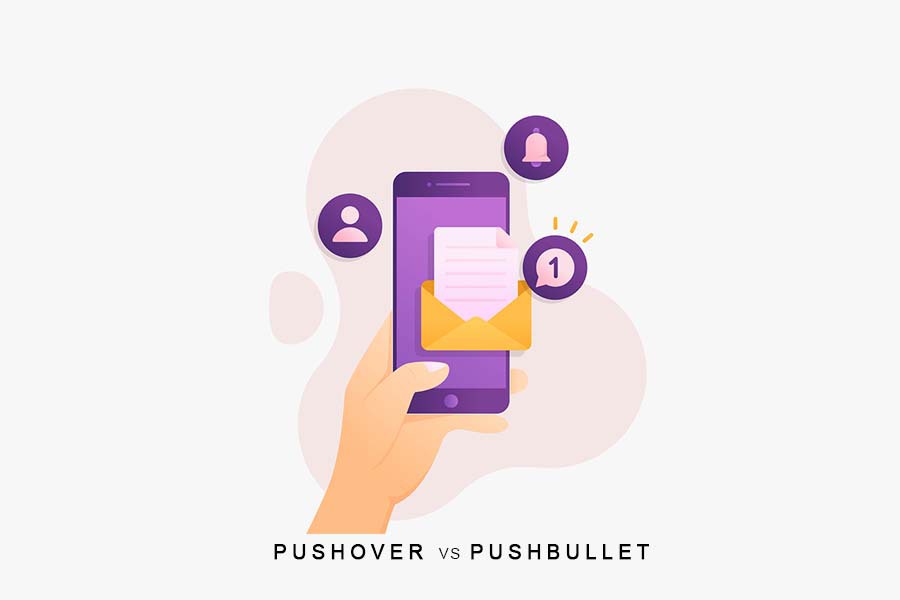Our cellphone notifications are one of the most important in our day-to-day lives. They are helpful, beneficial, and even crucial to us.
Of course, there have been notifications since computers started, but smartphones have just recently created an enormous application platform.
Those applications now seek to reach you, whether it’s messaging apps, social media apps, or just gaming apps that push you to achieve the next level.
The websites also wish to provide alerts as websites get more current last day. Applications like Pushover and Pushbullet are functioning here. These applications offer all of your smartphone alerts.
Pushover Vs. Pushbullet
Pushover is an essential, push-based notification tool readily integrated into Web programs such as iPhone, Android, iPad, and Desktop, shell scripts, servers, network monitors such as Nagios. Simple and easy to use Pushover. The program contains:
- Homepage and lock screen widgets.
- Functionality for delivering Android Wear alerts.
- A Tasker event plugin.
With Pushbullet, pictures, movies, and other documents should be simple and quick to get from your PC to your phone. The gateway may be made as simple as dragging and dropping.
Files are transferred via your Wi-Fi, so they don’t count towards your mobile data limit. Unfortunately, that also means that data are exceptionally rapidly transferred (even if they are more than 1 GB in size).
The Speed of Notification: Pushover Vs. Pushbullet
This is a major source of conflict between the two. Both claim to be the market’s finest notification system. However, the quality of notification will only be as great as the speed of notification.
Pushover provides a much quicker and more immediate notice. Pushbullet, on the other hand, can be untrustworthy sometimes, although it typically sends messages on time.
Once the popup alerts have been ignored, Pushover’s application provides a dedicated center for push notifications.
This makes alerts more accessible. Although Pushbullet offers the same function, it is a little more crowded.
Compatibility: Pushover Vs Pushbullet
Pushover is well-known in the industry for being compatible with a wide array of systems and locations. For instance, it can get push notifications from the usual suspects, such as Macs, PCs, Android applications, and iOS devices.
It can also send an alert from compatible home automation and leverage a number of services like Zapier, CommandPost, and IFTTT, among the many. This provides it with a competitive advantage over many other similar services.
On the contrary, Pushbullet is roughly on par with Pushover because its powerful API integration enables programmers to regularly utilize website announcements, clever home appliances, and computer gadgets.
It might not possess the robust support now provided by Pushover instantly, though, but it remains quite compatible.
Support for IFTTT: Pushover Vs Pushbullet
IFTTT is arguably among the most groundbreaking applications that enable far more automation than many gadgets normally do. It literally enables a lot of possible options for a user.
It is the computer coding word Pushover now has its own applet, the official IFTTT partner.
This enables the customer to adjust the notifications in addition to the existing excellent customization in the Native manner they desire.
There is no formal collaboration for Pushbullet, but it works with IFTTT, meaning that there are many more possibilities for customization, not only Pushover.
Features: Pushover Vs Pushbullet
Pushover is a very functional program. However, it is the ability to transmit alerts between devices if you count its major element.
However, it’s almost entirely possible, and without sure it is able to accomplish it well, it’s scarce from Pushbullet on its Feature List. Obviously, Pushbullet can transmit alerts via devices but can do more as well.
For example, it may deliver a little eye-blink text message, contacts, listings, hyperlinks, and documents.
This makes many everyday activities reasonably simple for the customer, and since Pushbullet offers so much in addition to a fantastic notification interface, one is rather enticed to test Pushover.
Pricing: Pushover Vs Pushbullet
There is a variation in the way prices are planned for each service. Pushover tried to purchase the model, whereas Pushbullet offers free and professional choices.
For example, Pushover may be utilized for seven days without charge but still would necessitate a one-time payment for persons or small groups to keep utilizing it.
But the model is different for the Pushbullet. It applies to people free of charge, but companies can purchase the pro option by subscribing monthly or annually.
Final Verdict
The decision between the two is quite difficult. Deciding what characteristics are helpful for individuals or businesses decides which method of costing is the most suitable for the company or person.
